#hing kong cinema
Text
If you know me, you know I’m a fan of “covert” fight scenes. Scenes where two people are fighting but they’re both pretending that something else is going on. This one from Dreadnaught (1981) is one of the best.
By the way, the guy that choreographed this scene, later went on to choreograph The Matrix films, Crouching Tiger, Hidden Dragon and Kill Bill.
#Dreadnaught#Yuen Woo Ping#Fung Hak On#Kwan Tak Hing#Kung fu#Kung fu cinema#Kung fu movies#Martial arts#Martial arts cinema#Martial arts movies#Fight scene#Hong Kong cinema#Asian cinema#Hong Kong action#Fighr choreography
31K notes
·
View notes
Text
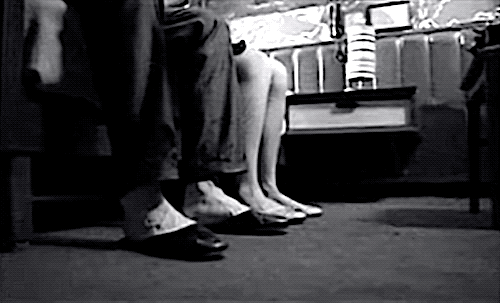
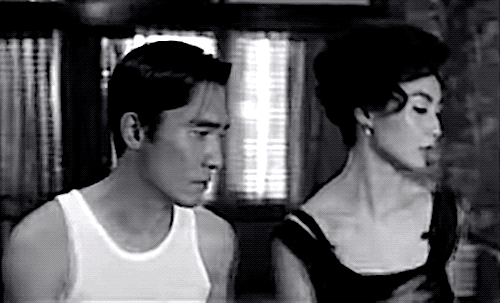

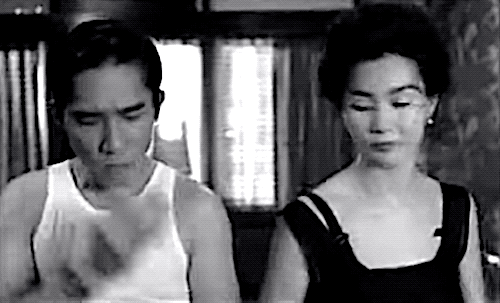


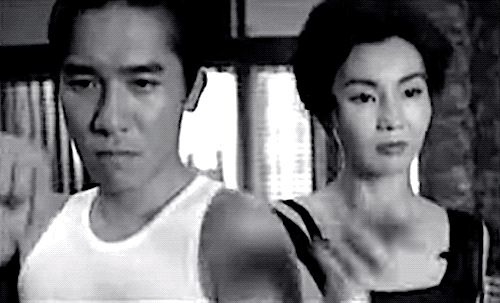
Tony Leung and Maggie Cheung in the outtakes from In the Mood for Love (Cantonese, 2000)
#In the mood for love#tony leung#maggie cheung#chinese cinema#hing kong cinema#Cantonese cinema#cinema: cantonese#wong kar wai#leung chiu wai#cheung man yuk#gif#dance gif
425 notes
·
View notes
Photo

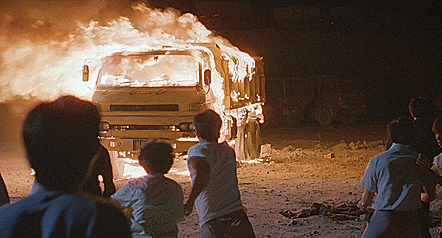


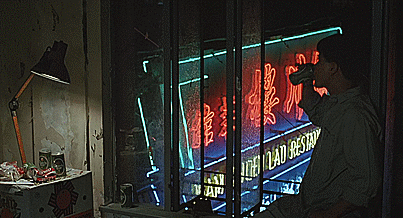
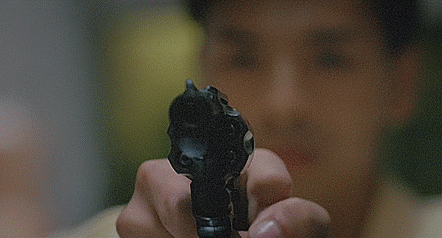

Brotherhood (1986)
#Brotherhood#Hing dai#Stephen Shin#danny lee#alex man#Wai Lam#80s action movies#hong kong cinema#filmedit#action movies#80s
72 notes
·
View notes
Photo
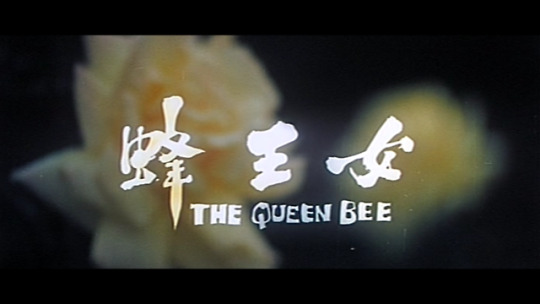

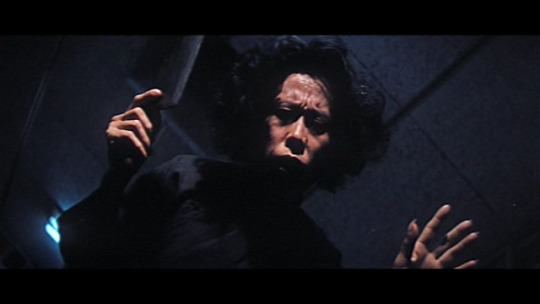
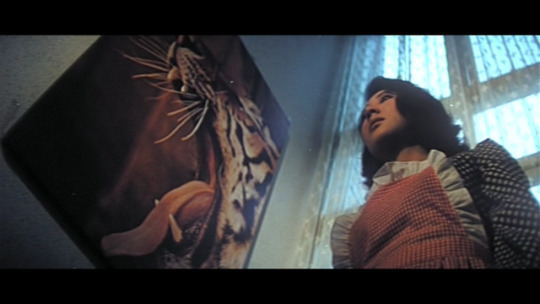



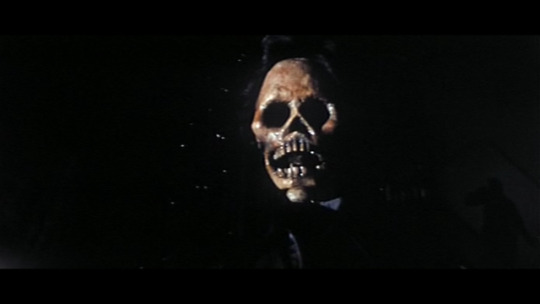

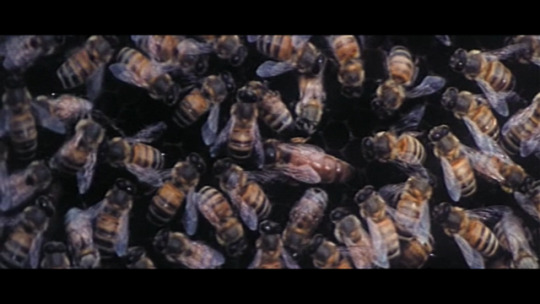
女王蜂 - The Queen Bee (1973)
#女王蜂#the queen bee#ting shan-hsi#ling yin#fong hing#wang yong#maio tian#co producton#hong kong#taiwan#mandarin#hk cinema#hk horror#70s horror#taiwan cinema#taiwanese cinema#taiwan horror#taiwanese horror#70s giallo#giallo#asian cinema#asian giallo#asian horror#asian women in cinema#asian women in horror#women in horror#70s fashion
58 notes
·
View notes
Photo



Hiroyuki Sana, Michelle Yeoh - Royal Warriors (1986)
#hiroyuki sanada#michelle yeoh#royal warriors#royal warriors movie#in the line of duty movie#hong kong cinema#hong kong action#wai-man chan#Kam Hing Yin
111 notes
·
View notes
Photo

Chung Hing Sam Lam (1994)
#Chung hing sam lam#Chungking exrpress#wong kar wai#hong kong#movie#cinema#film#art#tony leung#takeshi kaneshiro#indie#retro#cult
8 notes
·
View notes
Text
Will movie theaters be relevant in a post-pandemic world? It's now up to you.
On Monday, the beloved Arclight and Pacific Theaters announced they’re closing for good. ArcLight Cinemas is arguably Hollywood's most cherished theater and Pacific has been a mainstay in Los Angeles since 1946. The announcement of their closing shocked many as another casualty of the Covid-19 pandemic.
In the company announcement, they said "This was not the outcome anyone wanted, but despite a huge effort that exhausted all potential options, the company does not have a viable way forward." One can understand how a movie theater might go under in the middle of a pandemic but I did find it interesting that they felt there was truly no way forward.
One might've expected some members of the Hollywood elite to come clamoring forward with a bucket of cash to at least front the company long enough to sustain it through the pandemic so that it could reopen when the time was right.
Back in 2014, Kodak faced a similarly dire situation (for different reasons, obviously) and was ready to close its doors. That was until J.J. Abrams, Christopher Nolan, Quentin Tarantino, Judd Apatow and other filmmakers banded together to save the floundering company. Their shared love of film compelled them to save the dying medium and, thanks to those filmmakers and their studio backers, the company is still alive today.
But that hasn’t happened with these theaters. I'm not saying that can't happen, of course. The announcement just came this week so time will tell. I will say, however, it sounds like the company may have already exhausted their options (in light of the no "viable way forward" statement).
The death of ArcLight Cinemas and Pacific Theaters may not just signify another casualty of the pandemic but may actually be a sign of the times. Even prior to the pandemic many were wondering, amongst cord cutting and increasing interest in streaming content, how much longer would movie theaters stay relevant?
The pandemic has shifted the world in general, of course, and one of those big changes coming post-pandemic may be a world where movie theaters have a drastically different business model. Perhaps, one that makes them unrecognizable to us as we know them today.
Does that seem like too bold a claim? Perhaps. Let's just look at the state of the business now.
The state of the business pre-Covid
Prior to the pandemic, movie studios were beholden to the theaters to release their movies in theaters for a certain period of time. So if Warner Brothers wanted to release "Godzilla vs Kong" in theaters, they would have had to wait 90 days before releasing the film on Blu-Ray or to a streaming platform. There was a bit of flexibility on this when it came to digital rentals but otherwise 90 days was the standard. Now, movie studios did have the option of by-passing the theatrical exhibition altogether if they wanted and just going straight to people's homes. Why didn't they?
One reason might've been the Paramount Consent Decrees. The Consent Decrees date back to 1948 when the Supreme Court ruled that movie studios had to separate their distribution operations from their exhibition operations. Essentially, studios were barred from owning movie theaters as it was seen as a monopolistic practice and not fair to consumers. At the time, the only way you could see a movie was in a theater. Gradually, over time, of course, that changed and technology enabled us to watch movies at home. We got VHS, then DVD's, then Blu-Rays, then iTunes Movies, then Netflix and so on. But the theaters remained as a mainstay. Why?
I know many of my friends would argue it's because there's no better way to see a movie than in a theater. If you said that twenty years ago I would have agreed. But today, I'd say that's become largely subjective given the technology available at home. From a purely business oriented perspective, though, there's a host of little reasons theaters remained important such as films not being eligible for Oscar nominations without a theatrical release and, possibly, because studios worried that bypassing theaters would result in further regulations by the courts.
But mostly, it's because we, the audience, were accustomed to theaters. It gave a film legitimacy when it was presented in a theater. It used to be that if a movie went “straight to home video” it was considered cheap and probably low budget. Because of that, even though the studios were giving up 50% of their revenue to the theaters, their gross still was greater than what home distribution netted them in the initial release window.
Even after the invention of Blu-Rays and iTunes Movies, studios were still sending movies to theaters (1) because it was a huge source of revenue and (2) because it helped market the movie. The movie’s success at the box office gave us a reason to want that movie at home.
A shift in Public perceptions
There's a growing number of people that no longer think that way. If a movie goes to streaming now (the new home video), we no longer assume the movie is cheap or low budget. The content on streaming is just as good as the stuff we're seeing in theaters. There’s been a massive shift in our perception of what great “cinema” is. Yeah, you might still wanna' see some things in theaters but it doesn’t cheapen the movie for you if you don't.
And that’s a big problem for theaters. The leverage they’ve had over the studios up till now has been the Consent Decrees and our perception of what great cinema is. Significant, no doubt, but those two things have changed. In August of last year, the Paramount Consent Decrees were terminated with a two-year sunset period on certain aspects of the Decrees all but ensuring that studios could now vertically integrate if they wanted to. Or just bypass the theaters altogether - as some studios already have been experimenting with.
Even at the start of the pandemic, many movies were removed from theaters and sent straight to streaming with studios reporting that the revenue gained from VOD and online rentals rivaled the profit gained from theatrical distribution. As various studios like Paramount and Warner Brothers enter the streaming game alongside Disney (Disney Plus, Hulu) and Netflix, they too are experimenting. As you may have heard, Warner Bros. is releasing all their movies this year on their streaming platform HBOMax on the same day the films are released in theaters (a practice known as "day and date"). No doubt, the bean counters at Warner Bros. will be looking to see if this is a practice that should stay. It’d be fair to say that these experiments are not true representations of reality given the state of the world we’re testing this new distribution model with. But it is changing our perception of how important movie theaters are.
Studios are altering the deal
During the pandemic, theaters have been brought to their knees and have been forced to renegotiate certain terms with the studios including the release window between theatrical and home distribution. Most studios now have negotiated a home release date that comes just 17 days after the movie debuts in theaters - far shorter than the original 90 days.
This, of course, can be argued to just be a by-product of the pandemic. Theaters don't have leverage now but once the pandemic is over they will and they'll renegotiate. Right?
That really hinges on whether or not audiences still think a movie has more value if it was presented in a theater before they got to see it at home. Does it enhance the movie for me if it gets shown in a theater or am I just as interested (or maybe even more interested) in seeing it if it is sent straight to my home?
Other big changes are happening
There's other factors to consider as well. One might be the massive shift of homeowners into the suburbs and away from the city during the pandemic. Many employers are making it possible to work from home (a trend that will likely continue post-pandemic as the internet improves and more businesses see the benefits of a remote workforce) resulting in a mass exodus from cities to suburbs. Living in the suburbs means you don’t have the same pull of massive audiences in large gatherings the way you used to. We’re also investing more in our homes to make them enjoyable places to not only live but play as well. It’s a shift in our culture.
Another factor is that our perception of long form content has changed. Episodic television used to be where big movie stars went to end their careers after a career starring in movies. Now, it’s the reverse. A lot of stars are starting in television rather than finishing there because we (the audience) love binging on serialized content and when we’re not binging episodes we’re watching four hour movies (The Irishman, Zack Snyder's Justice League). Those experiences don’t work well in theaters where you’re stuck sitting in the same place and can’t hit the pause button.
Ultimately, the biggest factor might be what it usually comes down to - money. Before the pandemic audiences were already lamenting about the cost of movie tickets. A single afternoon of me taking my wife and kids to see the latest Disney movie in a theater could cost me $50 - $60 just for admission (not to mention the cost of food and drinks). But during the pandemic I was able to rent “Mulan” for $30 from comfort of my own home. Or, if I wanted, I could just wait three months and then see it as part of my regular Disney Plus subscription (which I was already paying for anyways so I could watch “The Mandalorian”).
As things open back up, many people are not necessarily swimming in money and, while I think the Covid relief packages have probably helped, a lot of people are still hurting and will be looking for any which way to save money. It seems unlikely that theaters will be able to lower their costs at this point given the need to recoup their losses from the pandemic and the probable need to make new investments in their facilities to stay competitive. They will need to get creative to show real value to audiences that might be reluctant to rush back in to theaters.
So what will happen to theaters post-pandemic?
For those of you worried I’m predicting doomsday for theaters - relax. I think theaters are probably here to stay regardless of what happens. They’re too much a part of what movies are to simply disappear. That said, they are a business and, currently, a failing one. What they look like post-pandemic doesn’t look great, from my perspective, unless the business model changes.
One possible scenario is that theaters become like playhouses or music festivals. In other words, they’ll still exist but in fewer quantities and will become more niche, featuring elevated experiences centered around tentpole movie properties which audiences are willing to pay a premium for (think “Top Gun: Maverick” or “Godzilla vs Kong”). I can see this form of adaptation working well in everyone’s favor.
Another possibility is that the studios buy out the movie theaters. The termination of the consent decrees has made that a real possibility. And then, once they’ve purchased them, build brand experiences centered around their properties. Something like miniature Disney Lands. They would most likely close a significant number of locations leaving only the flagships they felt would bring in a large audience and use them to promote the movies on their slate. A company like Disney with a large library of films could also use the theaters as a means of re-presenting old films from their library, borrowing a tactic from LucasFilm, and refresh old content to make it new again for theatrical. In essense, the net effect would be the same as in the first scenario: fewer theaters, more niche experiences.
I say this because it is somewhat unclear, to me at least, how the current model can persist if studios own theaters. Yes, they’d control theatrical distribution but they’d likely only be purchasing a theater to distribute their own movies. Would a company like Paramount, who’s only releasing seven movies this year, see the value of owning a theater chain? Even Disney’s slate only consists of 14 movies. To make the business viable (at least as it exists now), they would have to present movies from other studios. Would one studio trust that the studio in ownership of the theater was giving them a fair number of screens for presentation? It seems untenable under the current model.
What happens next is really up to you
The biggest change from the pandemic is that we as audiences have changed the way we look at movies. We’re ok with watching movies at home and, thus, the leverage theaters have to negotiate longer release windows between theatrical and home distribution has all but disappeared. The artificial pillars that made theaters a necessity are all but gone. And yes, the Oscars will likely still require that movies be released in theaters to be eligible for nomination but the standards of what a "theatrical release" means do not require as vast a distribution as you might think (see page 2, sub-section D of the General Entry rules). Plus, let's be honest - not all movies are meant to be Oscar contenders.
So really, the only thing to keep theaters relevant now is you - the audience. My prediction is that we’ll initially see some high demand for theaters as cities are re-opened and we try to return to our regular lives. But after we get back to a sense of normalcy (whatever that means in the future) we’ll see how much audiences really want to keep paying $20 per ticket to see a movie when they could just pay $30 once to rent it at home with the entire family or binge the new hot show on Netflix / Amazon / Apple TV/ Paramount Plus / Disney Plus / Hulu / Peacock / whatever else is out there.
At that point, the studios will do some math and if the profit they’re making from streaming outweighs the profit from the box office, theaters won’t have much of a leg to stand on. That is, unless audiences continue to demand theaters be a relevant part of the movie watching experience. Without considerable innovation on behalf of the theaters, though, I question how likely that is to happen.
1 note
·
View note
Photo

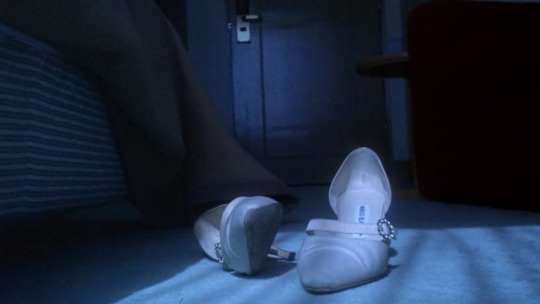
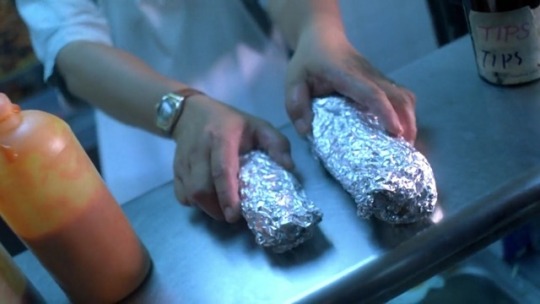
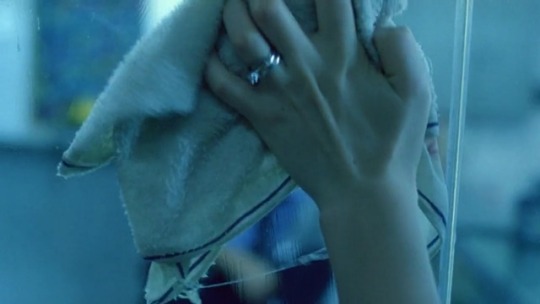
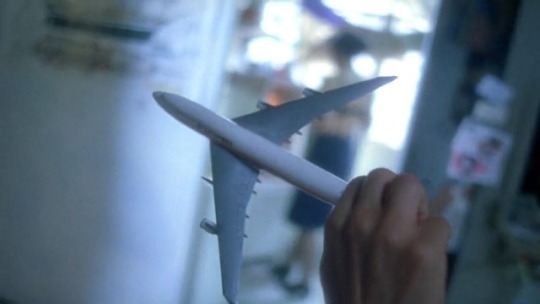

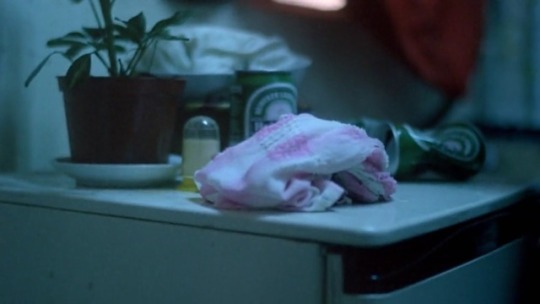
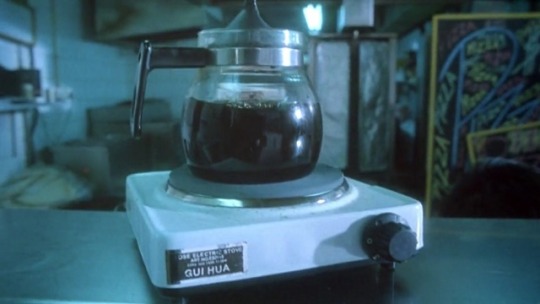
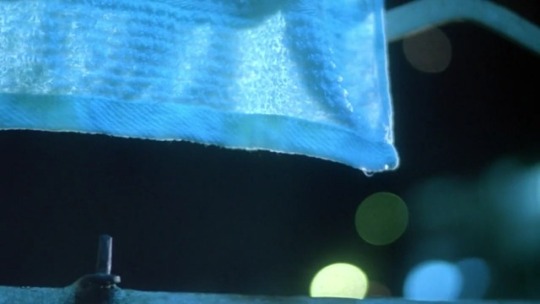
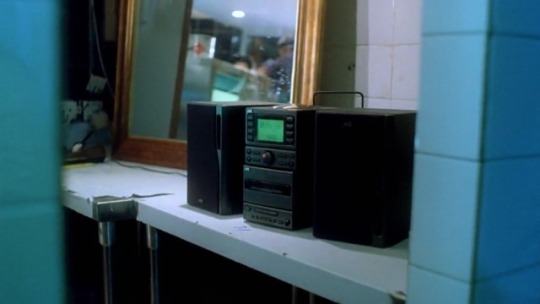
Chungking Express (1994)
Directed by Wong Kar-wai
Cinematography by Christopher Doyle
“If memories could be canned, would they also have expiry dates? If so, I hope they last for centuries.”
#chung hing sam lam#chungking express#1994#wong kar-wai#christopher doyle#brigitte lin#tony leung chiu wai#faye wong#takeshi kaneshiro#valerie chow#hong kong#cinema#movie#film#still#frame#movie stills#movie frames#cinematography#screencaps#mine#aesthetics#cinemabreak
320 notes
·
View notes
Text
I’m really saddened about the Monsterverse likely ending after Godzilla vs Kong..
Seeing Godzilla King of the Monsters last weekend was amazing. Tons of Godzilla and kaiju love abundant in the movie and it addressed a lot of flaws the G14 movie had and then some. But sadly the box office reports had it do only 49 million dollars which basically means it’s a big bomb or getting to be there at least.
I mean KOTM had a lot oft hings going for it,a lot of people are praising it and countries in Asia are reporting it to do good too especially in Japan so what happened? Number of reasons from what I’ve heard. Some say it's due to the 5 year gap between KOTM and G14,while others said that it's due to movie being too fan servicey to the fans. There's also talk of the movie being placed in a bad slot this month with other heavy hitters and of course the infamous Rotten Tomato Critics ruining the movie for people. I'm beginning to see why people are now starting to can't stand Rotten Tomatoes now.
Whatever the reason I’m really bummed about this because it means that after Godzilla vs Kong we’ll likely won’t see anymore Monsterverse movies and that Godzilla and giant monster movies in general will NEVER see mainstream appeal.The Monsterverse was that one big shot at doing it and it looked like it failed. Sure people are saying that Godzilla vs Kong will likely due much better because it’s a rematch between two fo cinema’s famous monsters but if the inclusion of Mothra,Rodan and King Ghidorah the other most well known Toho monsters were able to save KOTM from being a bomb then how will Kong make a difference? There’s also Toho’s World of Godzilla movies and that’s also cool but we’re likely only to see them get only limited theatrical runs and not as mainstream movies.
It’s possible that I may be overreacting and that KOTM will make even or at least Godzilla vs Kong saving it and we’ll all look back at this and laugh but right now it doesn’t feel good to be a Godzilla fan or a giant monster movie fan in general. :(
#godzilla#king kong#kong#skull islnad#island#godzilla 2014#legendary#toho#warner bros#rotten tomatoes#giant monsters#kaiju#titans#mothra#rodan#king ghidorah#godzilla vs kong#criticism#monsterverse
113 notes
·
View notes
Photo

Astonishing big Buddha in the mountains . Lantau, Hing Kong. ✔ Ovnis Videos, all the news that you will love ! ✔ Follow us ! #ovnisvideoscom ✔Contact us ! @ovnisvideoscom ✔ Collaboration ? [email protected] ✔ Our website : www.ovnis-videos.com ✔ Our shop: @ovnisvideosshop ✔ #ovnisvideoscom #ovnisvideos #ufology #ufo #ovnis #aliens #extraterrestres #extraterrestrial #space #spaceships #univers #asteroides #mars #spacex #elonmusk #nasa #esa #sciences #nature #robotics #tsunami #storm #earthquake #tornado #informatique #paranormal #cinema #news #theweekly #instagram https://www.instagram.com/p/BtyX4mYILY0/?utm_source=ig_tumblr_share&igshid=a367fasd0kj1
#ovnisvideoscom#ovnisvideos#ufology#ufo#ovnis#aliens#extraterrestres#extraterrestrial#space#spaceships#univers#asteroides#mars#spacex#elonmusk#nasa#esa#sciences#nature#robotics#tsunami#storm#earthquake#tornado#informatique#paranormal#cinema#news#theweekly#instagram
1 note
·
View note
Text
The Training Day Moment That Won Denzel Washington an Oscar
https://ift.tt/eA8V8J
In Training Day, Denzel Washington’s undercover detective Alonzo Harris is playing the long game, and edging both sides against the middle. “This shit’s chess, it ain’t checkers,” he explains to Jake Hoyt (Ethan Hawke), the rookie cop being led down the road to perdition. As another Denzel copper learned in the 1998 Satanic thriller Fallen, the devil often appears in the least likely of guises. For Training Day, Washington plays against type to lay out the temptations of easy money and real, street legal power. Alonzo may not have nabbed Jake’s soul with his opening gambit, but he walked away with an Oscar thanks to this scene.
Throughout the movie, Alonzo maneuvered his impressionable trainee into a place of rage which was both personal and professional. Before the movie begins, Alonzo was given 24 hours to deliver a cool million to a bunch of pissed-off Russians, and the corrupt cop was ready to leave young Hoyt with the bill. The “hot-headed” Alonzo killed a man on a weekend trip to Las Vegas only to find out later that the victim was connected with the Russian mafia.
Meanwhile Jake lands on Alonzo’s proverbial board green behind the ears, and tempted when Alonzo promises to designate him as a “hero” shooter in a raid that left a major drug dealer dead. Harris gave him the designation, along with a fistful of cash, in a bid to buy his soul; the alleged raid was a ruse and setup, orchestrated to steal enough money to pay off the Vegas debt, with enough to spare to take care of all the agents on the inside. It all hinged on the sacrifice of a pawn. Or in this case, a white rook named Jake.
All the other cops on the LAPD’s undercover narcotics squad are happy to pocket their cut. One of the cops takes two bullets for it, one of which goes through his armored vest, in order to sell it as a plausible story of “justifiable homicide in the line of duty.” Jake doesn’t want to be set up as a hero in a case of armed-robbery-with-a-badge, and turns down Alonzo’s payout flatly. He even passes on the promise of a fast-track to detective class which comes with the deal.
There’s nothing more dangerous or unpredictable than a clean cop. But like Lucifer looking to close the deal with Faust, there’s always a different tact. Alonzo apologizes for the “ugly” realities of the real world, even as he explains, “You gotta have a little dirt on you for anybody to trust you.”
Alonzo has been trying to besmudge the narcotics team applicant from the moment Jake showed up for work, but the move had been in play long before that. The “Zig Zag” man makes Jake smoke a bowlful of some mean green with a PCP sheen while cutting off four lanes of traffic (with a non-verbal service revolver retort for anyone complaining of delays).
Alonzo proceeds to get Jake to drink on the job, question his marital fidelity, conduct a search with a takeout menu passing for a warrant, and endure several unnecessary beatings. It is a grooming process, which is wasted on the stubborn youth.
The entire operation, as we come to learn, is to make a score and retain control of the streets. This is a team effort, and everyone has to take one for the team. Peer pressure is a hell of a thing to throw at an aspiring, professional underling, and the Satanic sergeant tosses it like salad in a three-course meal: Do the drugs, take the money, own the streets.
When the rookie narc wannabe breaks a chain of command, which has been handed down by the three Wise Men themselves, Alonzo plays god, the serpent and the King of Kongs to bring the sheep back into the fold. His unholy commandments are set in concrete. The two-man dialogue in the below scene is a diabolically convincing breakdown of common sense coppery. Jake sees Roger (Scott Glenn), the ex-cop and now ex-person left on the floor of the raid, as Alonzo’s friend who the superior killed “like a fly.” But the veteran drug cop knew Roger as “the biggest major violator in Los Angeles,” who he watched “operate with impunity for over 10 years.” Alonzo believes his justifications. “This is the game. I’m playing his ass. That’s my job. That’s your job.”
With this, Alonzo lays it out bluntly, plainly and without room for misinterpretation: Detective Harris is a master ass player, a virtuoso of undercover infiltration. The audience knows Jake has been played as expertly as Roger. Manipulated like some figure on a checkerboard square. Washington sells this idea completely. We do not doubt his sincerity, as evil as the concept is. The character is slick, a little intimidating, and an irresistibly magnanimous prince of a guy. But the actor has one extra weapon in his arsenal, and it is hardly concealed.
Alonzo Harris was Washington’s first villain role. The part is made more deliciously seditious because it subverts everything the performer had thrown on film sets and theaters stages his entire career. Washington excelled in playing men who held themselves to a higher standard. He shed one tear as the ex-slave Private Trip fighting with Union soldiers only to be whipped, publicly, for insubordination in Glory (1989). It would mark the first time he won an Oscar, although in the Supporting Actor category.
He took the blows of apartheid-loving, government-sanctioned sadists as South African activist Steve Biko in Cry Freedom. Washington’s naval executive risked court martial to avert nuclear battle in Crimson Tide (1995). His homophobic lawyer risked the stigma of social alienation to find justice in the age of AIDS in 1993’s Philadelphia. Perhaps, most markedly, his charismatic naturalism embodied the Nation of Islam activist and title character in Spike Lee’s Malcolm X (1992).
There is no practical way to measure the intangible effects respect, adulation, and natural leadership has on a viewer. By the time Training Day came out, Washington was already a mentor, and an inspiration for extremely talented actors. Audiences trusted him and afforded him a gravitas rarely achieved by some of the most seasoned of performers. Hawke’s character is fully primed to continue his education as the squad intended. We accept Alonzo Harris as a veteran who knows exactly what it takes to live through that job.
Washington performed in theater productions, including Othello, When The Chickens Come Home to Roost, and Dark Old Men. He would perform his most audacious Training Day scene in the round. His voice can be heard at the top of the tenement windows which replace the nosebleed seats, when he screams, “King Kong ain’t got shit on me.” But the intimacy of his scene with Hawke, in the car Alonzo calls his office, rounds out the performance with false bravado and quiet desperation.
He is solicitous, empathetic, reasonable, and completely twisted. Alonso knows he seems jaded, and he gets the young officer’s idealism. He was the same way. But when Alonzo fell from grace, he ruled the underworld. He cuts corners, takes graft, hassles kids for free smokes, but he’s got a conviction record which is measured in years, not human lives. It’s scary the first time, taking the money. But it’s how things get done: from the inside.
Det. Harris ranks as one of the greatest villains in cinema history. Washington looks likes he’s having a ball playing him, and Antoine Fuqua crafted an amazingly realistic playground for his moves.
“It takes a wolf to catch a wolf,” Alonzo advises during his tenure in the film. Lone or in a pack, Washington is the alpha dog in Training Day. His bark’s impressive, but it’s got nothing on his bite. Denzel unleashes a devil in a badge with a hellhound on his trail. He can’t rig all the games, but the Oscar was a sure thing in an unsure world.
cnx.cmd.push(function() { cnx({ playerId: "106e33c0-3911-473c-b599-b1426db57530", }).render("0270c398a82f44f49c23c16122516796"); });
The post The Training Day Moment That Won Denzel Washington an Oscar appeared first on Den of Geek.
from Den of Geek https://ift.tt/38yCSCY
0 notes
Text
Reading Wigley “The Plastic Line”
In the essay, Wigley showed multiple projects in which architects used plastic to achieve “lightness, movement, and transparency to its extreme (134)”. For example, he compares Fuller’s standing in the Necklace dome with “wearing it like a skirt (141)”. He argues that despite being regarded as an immaterial material and traditionally dismissed by architectural discourse, “the minimal plastic skin defines both a protected interior and an active engagement, both a shelter for the body and a prosthetic extension (146)”, a statement I unfortunately cannot relate to. Traumatized by a comparative literature course on urban horror cinema, I first thought of the a scene from Dream Home (2010), a Hong Kong slasher film about a psychopath, childhood victim of gentrification and saving for years for a luxury condo only to be told the price rises again the very day she puts down the deposit. In response, she starts a mass murder in the condo building using daily objects, including a plastic bag and a vacuum cleaner (whose shell might also be plastic). Here, the plastic bag over the victim’s face shows an extreme form of segregation and denial of empathy. Does transparency and flexibility of plastics really give rise to unity and engagement, or does it only internalizes and obscures segregation? Is the suffocating experience somehow related to plastic’s impact on the environment?
Another interesting point Wigley brings up is that reports of the United States pavilion repeat “an ancient bias, structure is privileged over surface”. I was reminded of the duality between color and drawing lines in David Batchelor’s Chromopholia, in which “color”, or the surface it delineates, is “dangerous, or it is trivial, or both” (Batchelor 23). This mirrors the traditional approach of architects, in which the columns and partition come before the surface. In the most recent exercise, we are asked to perform the reverse in fabrication: designing the surfaces that compose the vase, instead of the lines that circumscribe and define the surface. In the end product, the lines are vaguely demonstrated by the hinging tabs - extensions of the surface. In the design process, however, the procedure is reversed again, as according to Grasshopper wiring the defining curve still comes before the surface and shapes the latter. What does this imply about the relation between the surface and the structure?
0 notes
Text
MoviePass Stopped Working So Movie House Can Easily Live.
PROFITS: Anthony Hopkins turns in a wonderfully complicated, yet downplayed performance in a movie that says to an excellent tale however lacks any type of actual pressure to acquire you psychologically invested in this meant thriller. White has been actually composing write-ups on fashion, type, exercise, nourishment, motion pictures as well as enjoyment since 1994. The 2nd phase of Seton that includes our VIP movie theaters experience are going to ready for the general public upcoming week.

It has actually been actually rather a year on the action bodies main, along with various media incorporate stock being actually made available from feature films, witties, beautyblog-2018.info TELEVISION series and also activities. 2. Michelle Yeoh: Chinese-Malaysian starlet, Michelle Yeoh is actually world-famous for doing her personal stunts in the action films of Hong Kong.
Computer game seating is actually fair for flicks, as the majority of video gaming office chairs allow for a reasonably reclined ranking, however certainly not thus lounged that the customer comes to be sleepy. Since then increasingly more motion pictures have been shot in 3d. 3d motion pictures are probably the future of films.
All the incredible anime films, television serials or even advertising campaigns are worthy adequate to become enjoyed as a specialist animator's creative imagination is endowing on display screen. One Russian film that I delighted in which isn't on your listing is actually the soviet war movie, Happen and See.
The UK movie category body, which rates even more films as appropriate for youngsters than its own US equivalent, is to blame, point out the authors. The major function of film celebrations hinge on pair of traits: planting society and also offering films.
His story-lines, as well as the real world effects inherent in his plots, have kept me mulling long after the ultimate line. Flicks can be psycho-educational as they offer unusual ideas of family and business systems. The majority of theatres give one or more plans, which generally consist of motion picture tickets and also making use of a celebration space for a prepared opportunity, generally one to three hours.
The father brown of Philippine movie theater, José Nepomuceno (1893-1959), was actually a successful digital photographer just before switching to films. It is actually the final performance in the motion picture that places this movie right into my greatest want lists. It's an area where individuals locate the newest as well as ideal techniques to create motion pictures.
Look up Amazon Flash Video Recording > Flicks > Special Launch: Flicks. There is actually just so a lot to carry out on the internet, that you will definitely run out of opportunity, however never ever out of fun things to do. You can easily see movies as there are actually free of charge online motion pictures to see.
Fine truly, this goes to greatest a press, movie theaters might have much better stereo, yet mine is personally calibrated to my choice and I can generally get a DVD commentary or two. This conjuncture is actually also much researched in current film idea; find specifically Mary Ann Doane, The Emergence of Cinematic Time: Originality, Contingency, The Repository (Cambridge, MA: Harvard University Press, 2002).
:--RRB- I definitely need to have to view even more films. In the case of Mattel, our team are taking a look at over half of its own company being actually driven by Cable as well as essentially nothing through cinema films. Daniel Day-Lewis has resided in merely 10 motion pictures considering that 1989 as well as has actually had 4 Oscar nominations.

She has usually acted at work films such as Match Gals, Blood Stream and also Bone, Haywire, In the Blood and also much more. However don't drop suppose we can certainly not most likely to cinema, still our team can easily check out flicks on the internet with out downloading or watch TV programs online.

Below is actually a psychology practice you may try in your home: View a Hitchcock movie with an individual as well as notice just how they respond as the tale unfurls. Motion pictures also create a portion of amusement.
0 notes
Text
For this week’s blog post I will be doing a little discussion on the person who directed the film, “Ring or Ringu.” The person who directed the film is, Hideo Nakata. Hideo Nakata was born on July 19, 1961 in Okayama, Japan. The films that Hideo is mainly known for being, Ring (1998), Ring 2 (1999) and Dark Water (2002). He made his breakthrough into the film industry with the film, Ghost Actress in 1996. The film didn’t gain as much of a large-scale success, but this film helped get his foot into the door to direct the film, Ring in 1998. The reason why, Ghost Actress helped him get his foot in the door to direct Ring is because of the novelist who wrote the ring, Koji Suzuki, the “Stephen king” of Japan, approached him and asked for him to team up with him to create the film, Ring. When they created the film, they changed the face of Japanese Horror Cinema. With the success that the film gave it received a television series and two sequels witch also had an American version as well. Hideo Nakata was offered by Dreamwork to direct the film, Ring Two (2005) in America. Which helped him make his English-language debut with a remake of his own film, Ring Two.
The Ring (1998) had won multiple different awards within the first couple years of it being released. “Ringu won the 1999 Brussels International Festival of Fantasy Film's Golden Raven; Best Film at the 1999 Catalonian International Film Festival; Best Asian Film at the 1999 Fant-Asia Film Festival; and the 2001 NatFilm Festival Audience Award” Shows that this film was a big success within the first year. There was multiple different changed in the script before they started filing. They changed the protagonist's gender from male to female, the marital status from being married to being divorced and lastly, by changing the gender of the child to female to male. The Budget of this film started off with 1.2 Million dollars (USD). The production of the film only took around 9 months and one week to create. By breaking the whole 9 months and one week it took three or four months for the script and pre-production, Shooting took around 5 weeks and the post production took around four months. Within the first two months of the film was released in theaters it earned around $4.03 million USD which ended up making it Hing Kong’s highest-grossing Japanese-language film until 2015, when Stand by Me Doraemon 2015 was released.
Some interesting facts that I found out about the film were the way that they made the “cursed video” They shot those scenes with a 35 mm film then they passed it to a lab were the computer added a grainy effect to the clip to make it look older then it was. Also, the way that they made the actress look like she was coming out the tv was by making her walk backwards in a jerky motion then they would play the video in reversed to make it look like an unnatural-looking walk.
0 notes
Text
Scouring the Gobi Desert for the Fossilized Wonders of the Cretaceous
GOBI DESERT, Mongolia — Dr. Badamkhatan Zorigt was quiet, his fingers tracing the exposed, fossilized remains at his feet. A scattering of ribs and the tucked structure of a hind leg lay all pale white against the red sandstone of the Gobi’s Flaming Cliffs. The whole of humanity’s understanding of natural history hinged here in 1923 when Roy Chapman Andrews found nests of what were originally thought to be Protoceratops eggs during one of his many Central Asiatic Expeditions, confirming for the first time that the ancient reptiles were oviparous.
Badamkhatan looked up at the crowd gathered around him, his deep brown eyes bright with excitement as he pulled a GPS from his pocket to mark the find’s location. It was a new and slender piece of the natural history puzzle. When someone asked what the fossils were, there was no hiding the thrill in his voice.
“I don’t know.”
As the head of the vertebrate paleontology division at the Institute of Paleontology and Geology of the Mongolian Academy of Sciences, he’s part of a small team working to catalog and study the nearly endless trove of Cretaceous-period fossils hidden in that wide, red desert. He has spent his adult life poring over the delicate remains of creatures that called this place home some 80 million years ago. The fact that the weathered sandstone can still serve up a surprise for him is a testament to all that’s hidden out here.
Badamkhatan, or Badmaa as he insists we call him, works out of a small building in Ulaanbaatar, tucked in an alley behind a restaurant a short hike from the expansive, Soviet-era city square. Mongolia serves as the perfect estuary between northern and southern Asia, its culture a finely grained mix of influences from its neighbors. So much of the architecture is Soviet, the signs lettered in Cyrillic, and nearly all of the vehicles on the road are secondhand models from South Korea, Japan, and China. It’s a miracle mix of right-hand-drive JDM Prius hatchbacks with lifted suspensions to contend with the country’s roads (or in some places, lack thereof), hammered, left-hand-drive Land Cruisers, and Mitsubishi Pajeros. There are American-market vehicles, the odd Wrangler or F-150, but they’re few and far between.
We were there at the Institute, two days before, dust and grit crunching beneath the soles of our shoes, the smell of curing resin and earth thick in the air. The place had the feel of a library, quiet save for the tender scratch of tool on stone. Towering stacks of crates and plaster-wrapped fossils lined the main hall, all waiting their turn beneath the careful hands of patient workers.
Badamkhatan Zorigt has spent his adult life combing the Gobi and studying what he finds there. We couldn’t have asked for a better guide.
“The research never ends,” Badmaa said, pointing to a freshly opened plaster jacket, a complete Tarbosaurus skull grinning inside, its teeth longer than my palm. The massive carnivore is a cousin to the famous Tyrannosaurus rex, though Badmaa says recent research bolsters the theory that the beasts were scavengers, not predators. The hypothesis sprang from a close look at intact leg structures, including the ratio between femur and tibia/fibula. The math indicates they weren’t the fast, lethal runners of cinema lore and juvenile nightmare.
“It doesn’t make us very popular at elementary schools,” Badmaa joked.
Badmaa and his team have no shortage of work, thanks in part to a recent Infiniti-supported expedition through the Gobi. The Japanese automaker and the Explorers Club Hong Kong Chapter set out on a 20-day trek in June, covering some 1,000 miles of open Gobi in an attempt to map and document new potential dig sites. Much of that effort was aimed at leveraging drones equipped with lidar (a laser-based, radarlike surveying method used for 3-D mapping that also figures prominently in autonomous vehicle systems) and other imaging devices, allowing paleontologists to scout more ground in less time, with higher resolution than before. In the past, the scientists have had to rely only on grainy satellite images to help direct their efforts, eyeing the topography for the shales and sandstones indicative of the Cretaceous and employing a bit of hit-or-miss guessing.
The expedition unearthed hundreds of fossils, but for the scientists in Mongolia, the drone data is far more valuable, having mapped hundreds of kilometers of open desert down to the centimeter. The expedition identified some 250 previously undiscovered fossil beds, all of which will provide Badmaa and the other researchers at the Institute with years of productive exploration. Once the drone team processes the footage, volunteers can scan the images, identify fossils already on the surface, and tag their GPS coordinates for paleontologists to examine in the field at a later date.
It’s difficult to convey how amazing that is. Just getting to the Gobi from Ulaanbaatar is a feat. Flights from the capital to Dalanzadgad, the closest airport, are unreliable, subject to cancellation due to crushing rain, dangerous winds, or both. Our Fokker 50 touched down in dawn’s dim hours just long enough to dump us on the tarmac and take off again. The pavement ended at the airport parking lot, terminating in a spider web of two-track ruts that sprawled out into the darkness. Seeing a line of gleaming Infiniti QX80, QX60, and QX50 models waiting to ferry us across the desert was a shock after a day in the capital. They looked like a line of high heels in a world of hiking boots.
When asked why Infiniti would commit its resources to a project like the Gobi expedition, the answer was always, “Why not?”
We threw our kit into a QX80 and climbed in, figuring that, of all the machines there, the Nissan Patrol-derived brawler would be best suited to bashing across the desert. It’s two hours from the airport to the Three Camel Lodge, our base camp, and we naively hoped to catch a few moments of sleep before sunrise. Except dozing in a vehicle requires a road, and where we were going, there was no such thing. Our driver calmly aimed the truck at the taillights ahead, dim red orbs in a thick sea of dust, and planted the throttle, ripping across the ground at 60 mph. Our world shrank to what the headlights could touch: scraps of low vegetation, khaki sand, and opaque walls of airborne grit.
These machines had already endured the expedition across the Gobi, suffering more abuse in a month than most Infinitis will see in a lifetime, and they had the rattles to prove it. It was hard to reconcile the vehicles with the place. Infiniti isn’t a brand known for trudging across the wastes. It doesn’t even have an official dealer network in Mongolia. But productive science and exploration have always courted the support of open-minded individuals, organizations, and corporations, be it for glory or profit. When asked why Infiniti would commit to a project like this, the answer was always, “Why not?”
It’s an unusual response from an automaker now, when every answer, name, and paint code must be pressed and filtered through workshops, attorneys, focus groups, and marketing teams. And while it should have come off as a stunt, it didn’t. Because of all the automakers touting themselves as rugged go-anywhere brands, none of them were so bold as to launch themselves at the Gobi. We weren’t tearing across the darkness in a Jeep. We weren’t doing our best to outrun the sunrise in a Land Rover. We didn’t dart through the center of a herd of camels in a Geländewagen. We did it in an Infiniti. Mongolians like to say that it’s better to have seen their country once than to have heard of it a thousand times. Likewise, for men and machines, it is better to do a thing once than to spend an eternity claiming you can.
By the time we arrived at the Three Camel Lodge, we were ragged with adrenaline, the first soft light of the morning just beginning to beat back the night’s grays and blacks. Every sunrise is a gift, but there are slim words for what we saw as the sun rose: land, unfettered by field or fence from horizon to horizon. I was unprepared for the endless miles of sky and the sprawling, green desert. An ocean of it, the sight of which requested a stillness in everyone. A herd of horses watered nearby, more than I’ve ever seen together in one place. Mongolia has more than 4.5 million of them, and the nomads who tend their herds in the Gobi count them by stallion. One male’s harem might hold two mares or 12, plus all of their foals. Mongolia is a country that will not stop amazing you.
Badmaa carefully documents exposed bone fragments, photographing them and noting their GPS coordinates. It’s one of a massive collection of data points the expedition gathered.
The Lodge is its own wonder, a strap-and-beam building with beautiful arched eaves. A place for the weary and wonderstruck. Its owner, Jalsa Urubshurow, met us on the front porch with an open bottle and a warm smile. He’s something of a national legend, having helped bootstrap Mongolia’s tourist economy once democracy came to the country in 1990. He grew up in a Mongolian community in Howell Township, New Jersey, after his parents fled Stalinist persecution in the ’50s, started his own construction company, made his fortune, and helped form the North America–Mongolia Business Council in 1991.
Nomadic Expeditions, a company that specializes in tailoring trips deep into Mongolia for Western visitors, sprang from the council, and the Lodge arose as a logical extension as an ecologically sound, luxury accommodation for those visitors. It’s staffed entirely by Mongolians, all of whom are paid a wage on par with or in excess of what they could make in Ulaanbaatar, Urubshurow said.
Gobi sunrise: The desert shifts by the day. Heavy rains can turn the sea of sand into a fertile green prairie.
The place is without connectivity of any kind. There is no internet and no cell reception—a true oasis. It served as our base camp for two days as we wandered the region in the Infinitis, following our guides deeper into the Gobi, sifting through sand and searching for fossils alongside Badmaa. Fossil hunting, even with the added benefit of detailed drone mapping, requires patience and a keen eye.
“It’s much better to be lucky than good,” Badmaa said.
Most of us are neither, but it was still spectacular when one of the group spotted the find at the Flaming Cliffs the day before we were set to depart. The remains had lain right there in the stone for 80 million years. It was a very real connection, a spark across millennia, to see and touch them now. In a few weeks, once the journalists packed their bags and headed home, Badmaa and his team would return to the find, carefully unearth it, and transport it back to Ulaanbaatar to see where it fits with the puzzle pieces already gathered, to see what story it could tell us.
0 notes
Text
Scouring the Gobi Desert for the Fossilized Wonders of the Cretaceous
GOBI DESERT, Mongolia — Dr. Badamkhatan Zorigt was quiet, his fingers tracing the exposed, fossilized remains at his feet. A scattering of ribs and the tucked structure of a hind leg lay all pale white against the red sandstone of the Gobi’s Flaming Cliffs. The whole of humanity’s understanding of natural history hinged here in 1923 when Roy Chapman Andrews found nests of what were originally thought to be Protoceratops eggs during one of his many Central Asiatic Expeditions, confirming for the first time that the ancient reptiles were oviparous.
Badamkhatan looked up at the crowd gathered around him, his deep brown eyes bright with excitement as he pulled a GPS from his pocket to mark the find’s location. It was a new and slender piece of the natural history puzzle. When someone asked what the fossils were, there was no hiding the thrill in his voice.
“I don’t know.”
As the head of the vertebrate paleontology division at the Institute of Paleontology and Geology of the Mongolian Academy of Sciences, he’s part of a small team working to catalog and study the nearly endless trove of Cretaceous-period fossils hidden in that wide, red desert. He has spent his adult life poring over the delicate remains of creatures that called this place home some 80 million years ago. The fact that the weathered sandstone can still serve up a surprise for him is a testament to all that’s hidden out here.
Badamkhatan, or Badmaa as he insists we call him, works out of a small building in Ulaanbaatar, tucked in an alley behind a restaurant a short hike from the expansive, Soviet-era city square. Mongolia serves as the perfect estuary between northern and southern Asia, its culture a finely grained mix of influences from its neighbors. So much of the architecture is Soviet, the signs lettered in Cyrillic, and nearly all of the vehicles on the road are secondhand models from South Korea, Japan, and China. It’s a miracle mix of right-hand-drive JDM Prius hatchbacks with lifted suspensions to contend with the country’s roads (or in some places, lack thereof), hammered, left-hand-drive Land Cruisers, and Mitsubishi Pajeros. There are American-market vehicles, the odd Wrangler or F-150, but they’re few and far between.
We were there at the Institute, two days before, dust and grit crunching beneath the soles of our shoes, the smell of curing resin and earth thick in the air. The place had the feel of a library, quiet save for the tender scratch of tool on stone. Towering stacks of crates and plaster-wrapped fossils lined the main hall, all waiting their turn beneath the careful hands of patient workers.
Badamkhatan Zorigt has spent his adult life combing the Gobi and studying what he finds there. We couldn’t have asked for a better guide.
“The research never ends,” Badmaa said, pointing to a freshly opened plaster jacket, a complete Tarbosaurus skull grinning inside, its teeth longer than my palm. The massive carnivore is a cousin to the famous Tyrannosaurus rex, though Badmaa says recent research bolsters the theory that the beasts were scavengers, not predators. The hypothesis sprang from a close look at intact leg structures, including the ratio between femur and tibia/fibula. The math indicates they weren’t the fast, lethal runners of cinema lore and juvenile nightmare.
“It doesn’t make us very popular at elementary schools,” Badmaa joked.
Badmaa and his team have no shortage of work, thanks in part to a recent Infiniti-supported expedition through the Gobi. The Japanese automaker and the Explorers Club Hong Kong Chapter set out on a 20-day trek in June, covering some 1,000 miles of open Gobi in an attempt to map and document new potential dig sites. Much of that effort was aimed at leveraging drones equipped with lidar (a laser-based, radarlike surveying method used for 3-D mapping that also figures prominently in autonomous vehicle systems) and other imaging devices, allowing paleontologists to scout more ground in less time, with higher resolution than before. In the past, the scientists have had to rely only on grainy satellite images to help direct their efforts, eyeing the topography for the shales and sandstones indicative of the Cretaceous and employing a bit of hit-or-miss guessing.
The expedition unearthed hundreds of fossils, but for the scientists in Mongolia, the drone data is far more valuable, having mapped hundreds of kilometers of open desert down to the centimeter. The expedition identified some 250 previously undiscovered fossil beds, all of which will provide Badmaa and the other researchers at the Institute with years of productive exploration. Once the drone team processes the footage, volunteers can scan the images, identify fossils already on the surface, and tag their GPS coordinates for paleontologists to examine in the field at a later date.
It’s difficult to convey how amazing that is. Just getting to the Gobi from Ulaanbaatar is a feat. Flights from the capital to Dalanzadgad, the closest airport, are unreliable, subject to cancellation due to crushing rain, dangerous winds, or both. Our Fokker 50 touched down in dawn’s dim hours just long enough to dump us on the tarmac and take off again. The pavement ended at the airport parking lot, terminating in a spider web of two-track ruts that sprawled out into the darkness. Seeing a line of gleaming Infiniti QX80, QX60, and QX50 models waiting to ferry us across the desert was a shock after a day in the capital. They looked like a line of high heels in a world of hiking boots.
When asked why Infiniti would commit its resources to a project like the Gobi expedition, the answer was always, “Why not?”
We threw our kit into a QX80 and climbed in, figuring that, of all the machines there, the Nissan Patrol-derived brawler would be best suited to bashing across the desert. It’s two hours from the airport to the Three Camel Lodge, our base camp, and we naively hoped to catch a few moments of sleep before sunrise. Except dozing in a vehicle requires a road, and where we were going, there was no such thing. Our driver calmly aimed the truck at the taillights ahead, dim red orbs in a thick sea of dust, and planted the throttle, ripping across the ground at 60 mph. Our world shrank to what the headlights could touch: scraps of low vegetation, khaki sand, and opaque walls of airborne grit.
These machines had already endured the expedition across the Gobi, suffering more abuse in a month than most Infinitis will see in a lifetime, and they had the rattles to prove it. It was hard to reconcile the vehicles with the place. Infiniti isn’t a brand known for trudging across the wastes. It doesn’t even have an official dealer network in Mongolia. But productive science and exploration have always courted the support of open-minded individuals, organizations, and corporations, be it for glory or profit. When asked why Infiniti would commit to a project like this, the answer was always, “Why not?”
It’s an unusual response from an automaker now, when every answer, name, and paint code must be pressed and filtered through workshops, attorneys, focus groups, and marketing teams. And while it should have come off as a stunt, it didn’t. Because of all the automakers touting themselves as rugged go-anywhere brands, none of them were so bold as to launch themselves at the Gobi. We weren’t tearing across the darkness in a Jeep. We weren’t doing our best to outrun the sunrise in a Land Rover. We didn’t dart through the center of a herd of camels in a Geländewagen. We did it in an Infiniti. Mongolians like to say that it’s better to have seen their country once than to have heard of it a thousand times. Likewise, for men and machines, it is better to do a thing once than to spend an eternity claiming you can.
By the time we arrived at the Three Camel Lodge, we were ragged with adrenaline, the first soft light of the morning just beginning to beat back the night’s grays and blacks. Every sunrise is a gift, but there are slim words for what we saw as the sun rose: land, unfettered by field or fence from horizon to horizon. I was unprepared for the endless miles of sky and the sprawling, green desert. An ocean of it, the sight of which requested a stillness in everyone. A herd of horses watered nearby, more than I’ve ever seen together in one place. Mongolia has more than 4.5 million of them, and the nomads who tend their herds in the Gobi count them by stallion. One male’s harem might hold two mares or 12, plus all of their foals. Mongolia is a country that will not stop amazing you.
Badmaa carefully documents exposed bone fragments, photographing them and noting their GPS coordinates. It’s one of a massive collection of data points the expedition gathered.
The Lodge is its own wonder, a strap-and-beam building with beautiful arched eaves. A place for the weary and wonderstruck. Its owner, Jalsa Urubshurow, met us on the front porch with an open bottle and a warm smile. He’s something of a national legend, having helped bootstrap Mongolia’s tourist economy once democracy came to the country in 1990. He grew up in a Mongolian community in Howell Township, New Jersey, after his parents fled Stalinist persecution in the ’50s, started his own construction company, made his fortune, and helped form the North America–Mongolia Business Council in 1991.
Nomadic Expeditions, a company that specializes in tailoring trips deep into Mongolia for Western visitors, sprang from the council, and the Lodge arose as a logical extension as an ecologically sound, luxury accommodation for those visitors. It’s staffed entirely by Mongolians, all of whom are paid a wage on par with or in excess of what they could make in Ulaanbaatar, Urubshurow said.
Gobi sunrise: The desert shifts by the day. Heavy rains can turn the sea of sand into a fertile green prairie.
The place is without connectivity of any kind. There is no internet and no cell reception—a true oasis. It served as our base camp for two days as we wandered the region in the Infinitis, following our guides deeper into the Gobi, sifting through sand and searching for fossils alongside Badmaa. Fossil hunting, even with the added benefit of detailed drone mapping, requires patience and a keen eye.
“It’s much better to be lucky than good,” Badmaa said.
Most of us are neither, but it was still spectacular when one of the group spotted the find at the Flaming Cliffs the day before we were set to depart. The remains had lain right there in the stone for 80 million years. It was a very real connection, a spark across millennia, to see and touch them now. In a few weeks, once the journalists packed their bags and headed home, Badmaa and his team would return to the find, carefully unearth it, and transport it back to Ulaanbaatar to see where it fits with the puzzle pieces already gathered, to see what story it could tell us.
0 notes